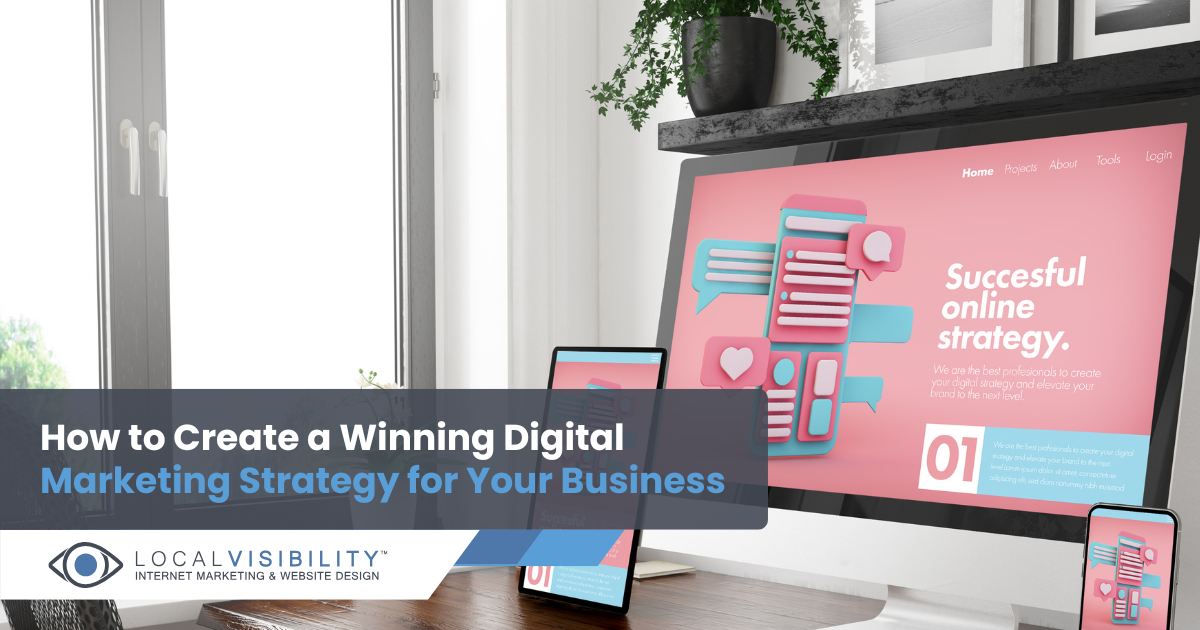How to Create a Winning Digital Marketing Strategy for Your Business

I've learned one thing for sure in digital marketing: Guesswork gets you nowhere. It's strategy that drives results. In today's world, where everyone’s online, having a solid digital marketing strategy is absolutely essential. Your brand won’t survive without it—it’s that simple. Whether you're a small business owner or running a growing enterprise, a solid strategy ensures your efforts aren’t wasted.
From my experience, the most successful campaigns come from careful planning and clear goals, plus a personal understanding of your audience. I’ve outlined the exact steps you need to take to build a digital marketing strategy that truly works. Here’s what you need to do to create your own comprehensive online marketing strategy:
- Understanding your business goals
- Knowing your target audience
- Analyzing your current digital presence
- Choosing the right marketing channels
- Developing your content strategy
- Setting your budget
- Implementing, monitoring, and optimizing your strategy
Want to take your digital marketing efforts from scattered to strategic? Follow my top tips to get started.
Understand Your Business Goals
I've seen businesses throw money at ads without a clear goal—and guess what? It rarely works. Defining your business goals is step one.
- Use SMART Goals: Specific, Measurable, Achievable, Relevant, and Time-bound. For example, instead of “get more traffic,” go for “increase website traffic by 20% over 3 months.”
- Identify Primary Objectives: Is it brand awareness, lead generation, email signups, or sales—or something else entirely? Your goals will determine your tactics.
- Brainstorm With Intent: Sit down and list what success looks like for your business. I've found that clarity here saves time and money later.
Know Your Target Audience
You can't market effectively if you don't know who you're speaking to. Knowing your audience—in a real, in-depth way—helps you craft messages that resonate and drive action.
I suggest starting with detailed buyer personas—fictional profiles that represent your ideal customers. Think about their demographics, behaviors, and pain points. Tools like Google Analytics and social media insights make gathering this data easy. Knowing your audience deeply will help you connect with them in meaningful ways.
Analyze Your Current Digital Presence
Before planning your next move, you need to understand where you stand. Consider:
- Conducting a Digital Audit: Review your website, SEO rankings, social media profiles, and email lists. It’s usually best to have a professional take care of this step.
- Using SWOT Analysis: Identify (S)trengths, (W)eaknesses, (O)pportunities, and (T)hreats.
- Using Digital Tools: SEMrush for SEO insights, Google Analytics for traffic patterns, and Moz for site performance have been game-changers for local business owners.
Choose the Right Digital Marketing Channels
I always advise aligning your channel choices with your business goals and audience preferences. For example, a fashion brand might shine on Instagram, while a B2B service provider finds more success with LinkedIn and email campaigns. Generally, you should pick channels based on where your audience hangs out and what aligns with your goals.
- SEO: Perfect for long-term, organic traffic growth.
- Content Marketing: Blog posts, videos, and guides build authority and engage your audience.
- Social Media: Platforms like Instagram for visuals, LinkedIn for B2B, and TikTok for trend-based marketing.
- Email Marketing: Still one of the highest ROI tactics.
- Paid Ads: Perfect for quick traffic and conversions.
Develop Your Content Strategy
Quality content is the heart of digital marketing. Without it, you have nothing to promote.
- Create a Content Calendar: Plan posts by themes, dates, and platforms. Don’t forget to stick to your plan—consistency helps your SEO efforts.
- Focus on Quality: Share valuable, relevant content that solves your audience’s problems.
- Mix Formats: Blogs, infographics, videos, and podcasts. Different people engage with different types of content.
- Use Strong CTAs: Always tell your audience what to do next—click, sign up, or buy.
Set Your Budget
Budgeting is about making your money work for you. Start by outlining your total marketing budget, then break it down by channel—SEO, paid ads, content creation, and tools. I always remind businesses that even small budgets can drive big results if spent wisely. For instance, focusing on organic social content and email marketing can be cost-effective and high-impact.
Implement and Monitor Your Strategy
Execution is where your strategy comes to life—but monitoring is how you make it better. Here’s what to do at this stage:
- Launch Campaigns: Execute your plan across chosen channels.
- Track Metrics: Watch KPIs like website traffic, engagement rates, and conversion rates.
- Use Analytics Tools: Google Analytics, Hootsuite, and SEMrush are popular picks.
- Stay Flexible: Be ready to tweak ads, headlines, and landing pages based on performance.
Optimize and Improve Continuously
Digital marketing isn’t static—it’s a constant cycle of testing and refining. Optimization means learning from your results and making changes when needed. I’ve learned that even a few small updates can lead to major improvements.
- A/B Test: Experiment with different ads, headlines, and offers.
- Refresh Content: Update old blog posts and add new ones.
- Follow Trends: Stay updated on platform changes and digital trends.
- Learn from Data: Analyze results and adjust your strategy regularly.
Bonus: Tools and Resources for Digital Marketing Success
I've discovered that the right tools make a big difference in my marketing success online. Give these helpers a try:
- SEO Tools: SEMrush, Ahrefs
- Content Creation Tools: Canva, Grammarly
- Social Media Tools: Buffer, Hootsuite
- Email Marketing Tools: Mailchimp, Constant Contact
- Analytics Tools: Google Analytics, Hotjar
Conclusion
A winning digital marketing strategy doesn’t happen by chance—it happens by choice. It’s built on clear goals, audience insights, and consistent optimization. Whether you're just starting or refining an existing strategy, my simple steps will help you create a plan that gets results. So, are you ready to take your digital marketing to the next level? Start today—and stay committed. Success is in the strategy.
